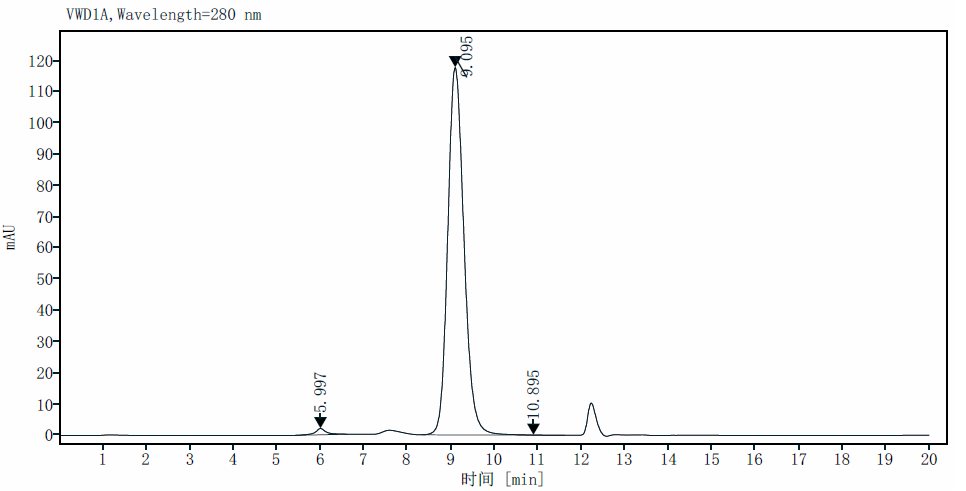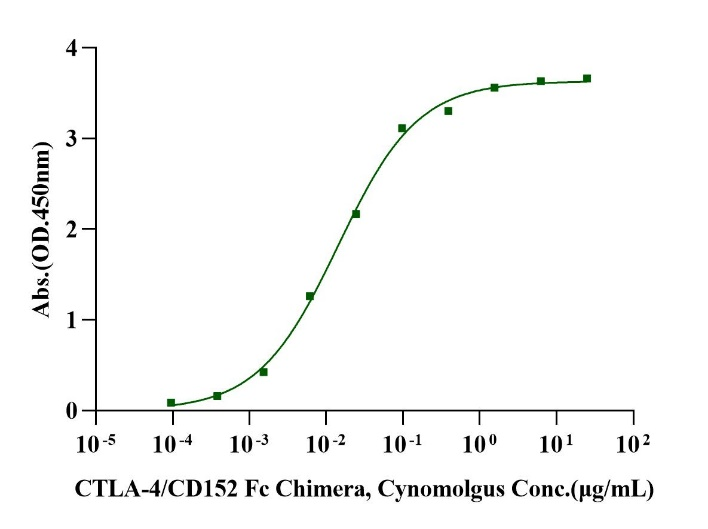43-50kDa (Reducing)
Reconstitute at 0.1-1 mg/ml according to the size in ultrapure water after rapid centrifugation.
Kamiyama N, Saechue B, Sachi N, Dewayani A, Chalalai T, Ozaka S, Ariki S, Soga Y, Kagoshima Y, Ekronarongchai S, Hidano S, Kobayashi T. TRAF6 signaling in T cells is crucial for the pathogenicity of experimental autoimmune encephalomyelitis. Int Immunol. 2023 Dec 28:dxad055. Martella S, Lucas M, Porcu M, Perra L, Denaro N, Pretta A, Deias G, Willard-Gallo K, Parra HS, Saba L, Scartozzi M, Wekking D, Kok M, Aiello MM, Solinas C. Primary adrenal insufficiency induced by immune checkpoint inhibitors: Biological, clinical, and radiological aspects. Semin Oncol. 2023 Dec 6:S0093-7754(23)00083-0.
CTLA-4 (Cytotoxic T-Lymphocyte Antigen 4) is also known as CD152 (Cluster of differentiation 152), is a protein receptor that downregulates the immune system. Humanor mouse CTLA-4 cDNA encodes 223 amino acids (aa) including a 35 aa signal sequence, a 126 aa extracellular domain (ECD) with one Ig-like V-type domain, a 21 aa transmembrane (TM) sequence, and a 41 aa cytoplasmic sequence. It is found as a covalent homodimer of 41-43 kDa. Within the ECD, human CTLA-4 shares 98%, 68%, 71% and 83-86% aa sequence identity with cynomolgus, mouse, rat and porcine/bovine/rabbit/feline/canine CTLA-4, respectively. CTLA4 is similar to the T-cell co-stimulatory protein, CD28, and both molecules bind to CD80 and CD86, also called B7-1 and B7-2 respectively, on antigen-presenting cells. CTLA4 transmits an inhibitory signal to T cells, whereas CD28 transmits a stimulatory signal. Fusion proteins of CTLA4 and antibodies (CTLA4-Ig) have been used in clinical trials for rheumatoid arthritis.
1μg (R: reducing condition, N: non-reducing condition).


Immobilized B7-1/CD80 His Tag, Human (Cat. No. UA010085) at 5.0μg/mL (100μL/well) can bind CTLA-4/CD152 Fc Chimera, Cynomolgus (Cat. No. UA010827) with EC50 of 11.18-18.05ng/mL.